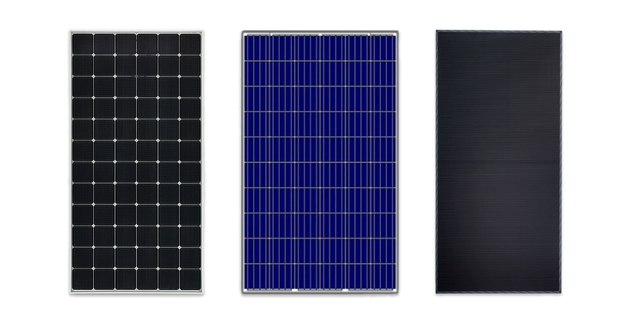Solar Systems Fundamentals Explained
Wiki Article
Not known Details About Solar Systems
Table of ContentsAll about Solar SystemsThe Only Guide to Solar SystemsThe Single Strategy To Use For Solar SystemsThe smart Trick of Solar Systems That Nobody is Talking About
There are 3 different kinds of photovoltaic panels: monocrystalline, polycrystalline, and slim movie. Monocrystalline photovoltaic panels are highly reliable and have a smooth style, however come at a greater price point than other solar panels. Polycrystalline photovoltaic panels are more affordable than monocrystalline panels, however, they are less efficient and aren't as visually pleasing.Nowadays, there are several selections of monocrystalline solar panels on the market to select from., are ending up being a progressively prominent monocrystalline option.
Since monocrystalline solar cells are made of a solitary crystal of silicon, electrons have the ability to conveniently move throughout the cell, enhancing overall performance. Not only do monocrystalline panels have the highest efficiency ratings, they typically additionally have the greatest power capacity ratings. Many monocrystalline panels on the market today will certainly have a power outcome rating of at the very least 320 watts, however can go up to around 375 watts or greater!.
Due to the fact that polycrystalline cells consist of numerous silicon cells, the electrons can not relocate as quickly and also as a result, lower the performance of the panel. The reduced performance of polycrystalline panels likewise means they have a tendency to have a lower power result than monocrystalline panels, normally varying in between 240 watts as well as 300 watts.
Things about Solar Systems
In order to satisfy your energy requires, you would certainly require to set up more slim movie panels over a huge area to create the very same quantity of electricity as crystalline silicon solar panels. This is why thin film solar panels do not truly make feeling for household installations where room is limited.The temperature coefficient informs you just how a lot the power outcome will reduce by for every 1 * C over 25 * C the panel gets. The typical temperature level coefficient for mono as well as polycrystalline panels normally drops someplace in between -0.
In reality, with some slim film panels, it's difficult to even see the private cells within the panel. They also often tend to have much less click over here now electrical wiring and also busbars, indicating there's less white area. Since they are so ineffective, you would try this web-site require to cover your entire roof covering in slim movie panels - which may or might not be your style.

Some makers have actually functioned around this with black packaging or forming the cells in different ways, yet these visual adjustments can affect both the price as well as performance of the panels. Overall, monocrystalline panels still look sleek, yet they're a bit extra pronounced than thin movie panels. solar systems. The process in which polycrystalline solar batteries are manufactured triggers the cells to have a blue, marbled look.
Some Known Factual Statements About Solar Systems
If you get on a limited spending plan, polycrystalline panels might make even more sense for these details you. We do not advise slim movie photovoltaic panels for household setups - their performance and resilience don't make the affordable worth it, and it's not likely you'll have almost enough room to install the variety of slim film panels you would require to cover your household power usage.Given that they are made from pure silicon, they can be readily determined by their dark black shade. Making use of pure silicon likewise makes monocrystalline panels one of the most space-efficient and also longest-lasting among all 3 solar panel types. This comes at a cost a great deal of silicon is thrown away to produce one monocrystalline cell, often reaching over 50%. solar systems.

Amorphous silicon panels (A-Si) obtain their name from their unformed nature. Unlike mono-and polycrystalline solar cells, the silicon is not structured on the molecular level.
The 5-Minute Rule for Solar Systems
$0. 32-$0. 65 $1 $1. 50 $0. 70 $1 $0. 60 $0. 70 $0. 50 $0. 60 $0. 43 $0. 50 Note that these figures don't include the cost of installation and labor. With labor and other above aspects, the total amount can increase to $2. 50 to $3. 50 per watt.
This implies that thin-film panels can be a great option for hotter atmospheres or areas that experience even more sunlight throughout the year. The updated International Building Code of 2012 calls for solar panels to match the fire rating of the roof covering where they are installed. This is to guarantee that the components do not increase the spread of flames in the event of a fire.
Report this wiki page